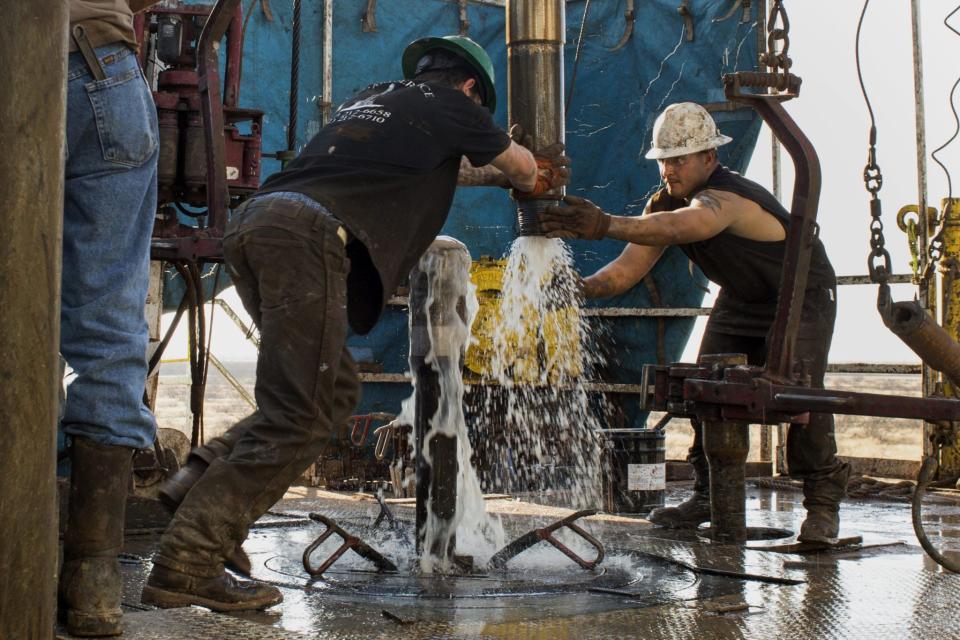As the EV market cools, the oil industry scorches with $250 billion in high-stakes deals and mass consolidation: ‘The bigger the company is, the more money they make’

It appears the golden age of EVs is coming to an end in 2024. After surging for years, EV sales stalled in the first quarter. The blockbuster IPOs that were commonplace in 2021 are now few and far between, with Renault scrapping plans to take its subsidiary Ampere public in January amid cooling electric-vehicle demand. And once-high-flying EV startups are struggling as well. Rivian Automotive has seen its stock tumble more than 90% since its IPO in November 2021, while fellow EV darling Lucid Group saw its shares plunge 95% over the same period.
Meanwhile, the oil and gas industry is moving in the other direction. Crude production hit a record high in the U.S. last year and isn’t showing any signs of slowing. The Vanguard Energy Index Fund ETF, which tracks oil and gas stocks, has surged more than 17% over the past twelve months—compared to a mere 5% rise in the Global X Autonomous and Electric Vehicles ETF, which tracks EV-linked equities. And since the start of 2023, there have been more than $250 billion in high-stakes deals in the oil and gas industry.
Rising oil prices have helped energy companies’ profits surge in recent years. That has left oil and gas giants, often referred to as supermajors, with record cash piles, enabling a wave of share buybacks, dividend hikes, debt reduction strategies, and industry consolidation through mergers and acquisitions.
In the past year alone, Exxon announced a $60 billion deal to acquire the Permian Basin–focused shale driller Pioneer Natural Resources; Chevron acquired one of the leading shale producers Hess Corp. for $53 billion; and DiamondBack Energy acquired onshore driller Endeavor for $26 billion.
The latest example of this industry consolidation came this week when ConocoPhillips announced its $17.1 billion all-stock deal to acquire Marathon Oil, which, like other recent supermajor acquisition targets, operates shale drilling sites across the country.
So what’s driving the unending consolidation in the oil and gas industry, beyond energy giants’ excess cash piles?
“I would say three things: The Permian Basin, the Permian Basin, and the Permian Basin,” Jay Hatfield, CEO of Infrastructure Capital Advisors, told Fortune.
The veteran investor isn’t being entirely facetious. The Permian Basin, an area of about 86,000 square miles in western Texas and southeastern New Mexico, is the largest petroleum-producing region in the U.S., and oil and gas companies have flocked there in recent years amid a shale boom.
Shale is a type of sedimentary rock that contains organic material which is used to produce oil. Historically, it’s been more costly to drill, but Hatfield noted that improved fracking techniques allowing for deeper and more profitable onshore shale operations have led to a slow but steady transformation in the oil and gas industry in recent years.
“Supermajors, like Conoco, they're basically built to do gigantic offshore projects, mostly. That's where their competitive advantage was,” he explained. “But the Permian has obsoleted those projects because the returns are just way better.” Improved returns from onshore shale projects compared to offshore crude projects mean “these gigantic companies need to have more onshore drilling operations,” according to Hatfield.
The CEO, who runs a fund that invests in midstream pipeline companies, the Infracap MLP ETF, noted that there are a number of shale-producing regions—including the Bakken Formation in North Dakota and Montana and the Delaware and Eagle Ford basins in Texas—that are all attracting oil and gas giants. In order to get more territory to drill for oil in these areas, supermajors are looking to buy smaller oil and gas producers that already own claims, leading to the current wave of mergers and acquisitions in the energy industry.
“But it's not just to get more drilling in the Permian,” Hatfield said. Onshore drilling projects also protect supermajors from geopolitical and supply-chain risks associated with offshore drilling in the Middle East in the current heated environment. And they’re less susceptible to outages due to extreme weather events like hurricanes.
“Just think about the risk-reward [tradeoff]. Do you want to drill offshore off Israel? Or do you want to drill in Texas?” the CEO said. “In our opinion, it’s mostly about moving to superior drilling operations onshore that are now more economic than offshore.”
On top of the shale boom, the oil and gas industry is also consolidating due to a muted long-term growth outlook. Hatfield noted that many oil and gas executives understand that they won’t be able to offer growth opportunities to investors, so instead of spending money to increase their own production, they’re buying up smaller competitors to boost their market share and find efficiencies that can increase profits.
“They get that they're not growth companies anymore. But they don't want to run down their production. They don’t want to liquidate the company, they’re CEOs. So instead, they see that the bigger the company is, the more money they make,” he explained, adding that the ongoing wave of consolidation “just makes a lot of sense” and should continue.
“It all makes perfect sense. The larger companies are going to continue and try to get this Permian share. And the U.S. is also, from a risk-reward standpoint, with the shale play, a very powerful draw,” he concluded.
This story was originally featured on Fortune.com

 Yahoo Finance
Yahoo Finance 